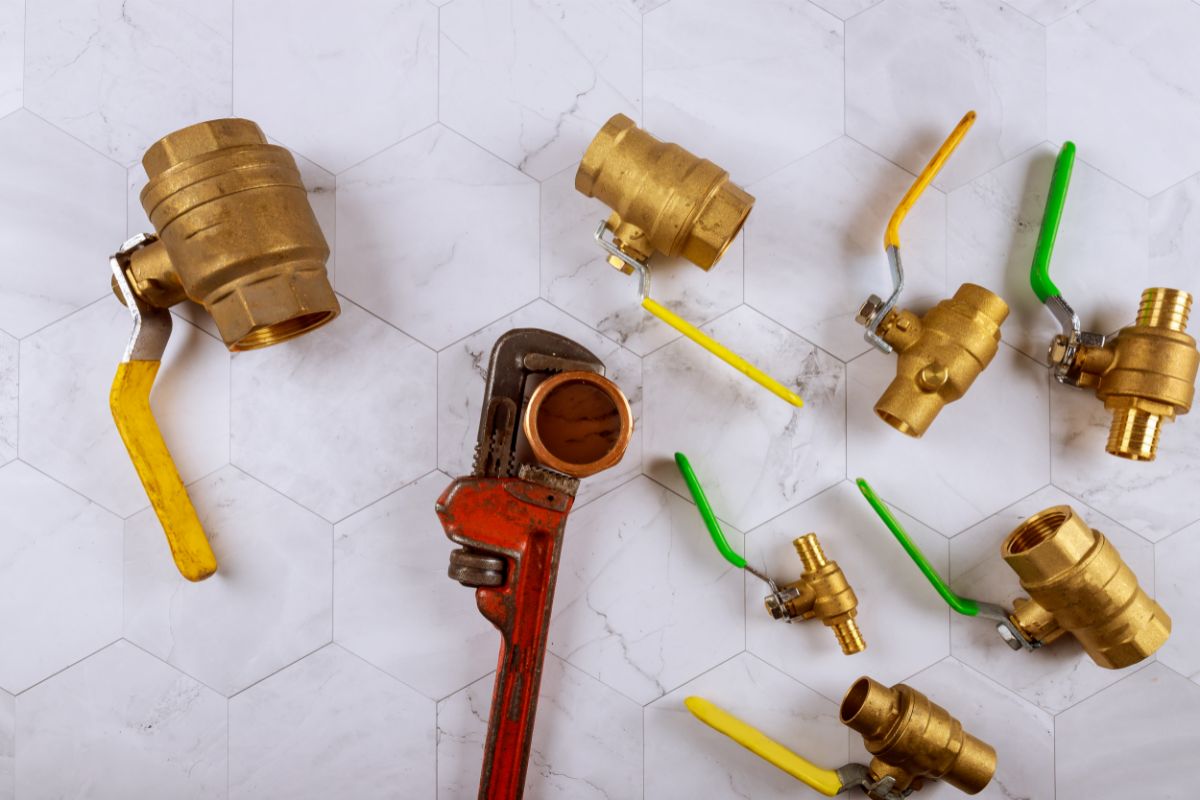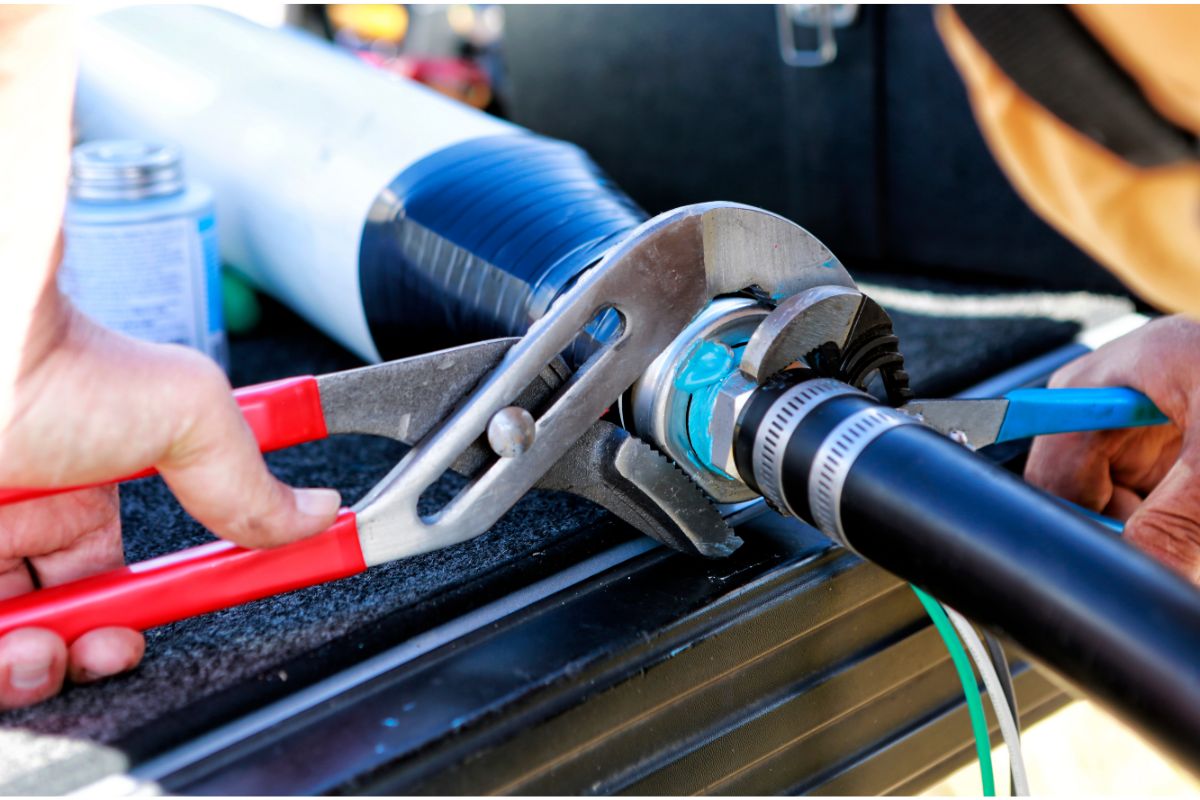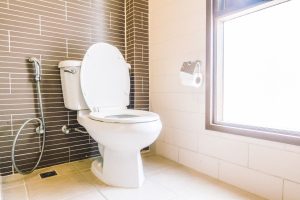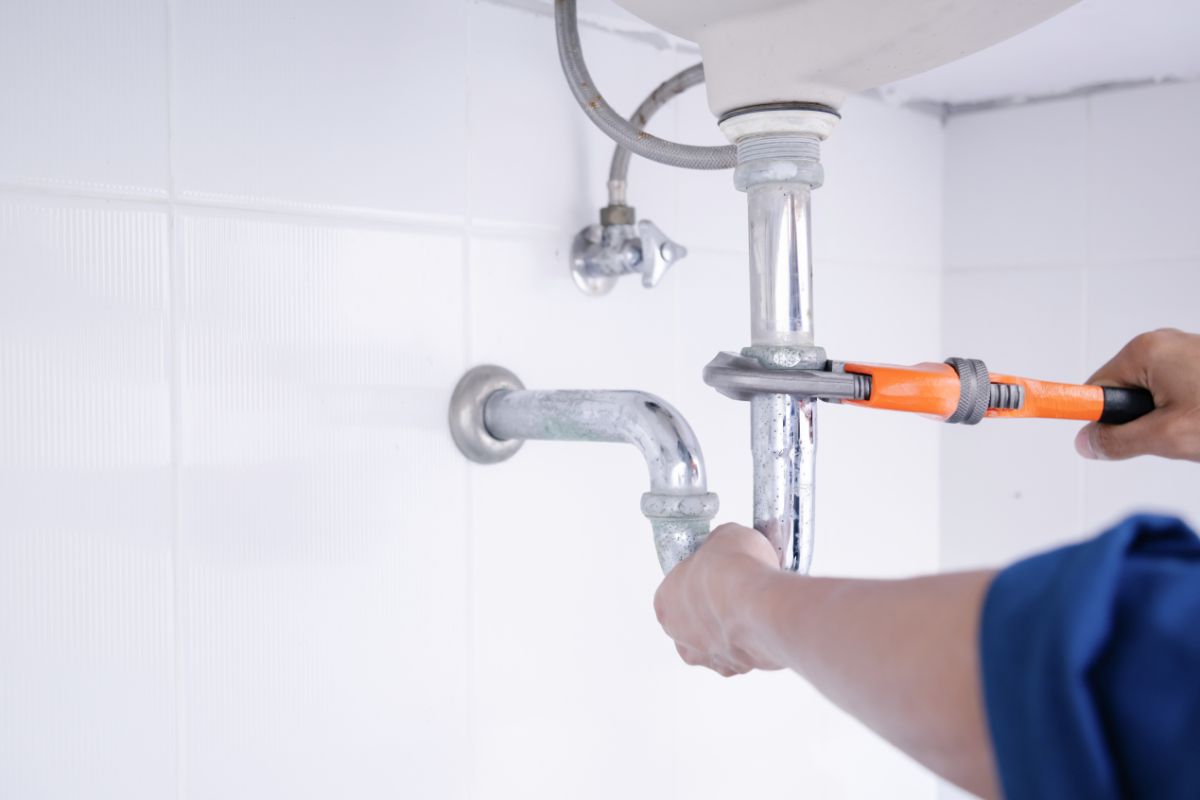Table of Contents
Rising repair bills and leaky pipes have you dreading your old home’s antiquated plumbing? Bringing the system up to date no longer means budget-busting bills. This guide unpacks typical costs for installing new plumbing in older houses. Learn how pipe layout, regional factors, and material choices influence quotes.
Average Costs of Plumbing Installation in Old Houses
When it comes to plumbing installation in old houses, costs can vary significantly depending on the amount of work required, regional factors, and other considerations. Providing a general cost framework helps homeowners budget and plan for essential plumbing upgrades or renovations.
Cost Ranges
The average cost of plumbing installation in an older home runs anywhere from $4,000 to $12,000 for a full system overhaul. However, smaller jobs like installing new pipes under the kitchen sink might only set you back $500 to $2,000. The wide range speaks to the myriad factors influencing plumbing installation expenses.
The age and size of your home impact costs. Larger homes with antiquated plumbing need more work, hiking overall costs. Homes constructed prior to the 1960s likely contain galvanized steel pipes notorious for corrosion and leaks over time. Replacing these aging pipes gets pricier compared to newer copper or PEX piping.
The scope of work also affects your bottom line. A full home re-pipe costs more than upgrading select fixtures and supply lines. However, even small jobs add up with labor fees factored in. Your location on the home also impacts pricing. Kitchen and bathroom upgrades run higher thanks to accessibility issues.
Finally, material choices make a difference. Opting for copper over PEX or PVC pipes increases expenses. Specialty fixtures and faucets come at a premium too. Prioritizing function over form helps control costs without sacrificing quality.
Cost Per Square Foot
Analyzing plumbing installation costs on a square footage basis also provides useful insight. Expect to pay an average of $6 to $15 per square foot. New construction averages just $3 to $7 per square foot. The gap highlights the complexities of working in established homes.
Plumbers deal with limited access while navigating existing systems in older homes. Areas like crawl spaces and attics prove challenging. Some pipes run inside walls, requiring extensive demolition and repair work after installation. These factors drive up per square foot costs compared to new builds.
However, you can curb expenses by taking a phased approach. Target one problem area first, like your main water supply line. Then tackle additional projects over time as budget allows. This prevents major disruptions while spreading costs out. Just remember to factor long-term savings into your plumbing installation investments.
Regional Cost Differences
Australia sees considerable variations in plumbing installation costs across different states and territories owing to several location-based factors.
Labor costs account for the biggest discrepancy. Plumbers’ rates range from $45 to $150 per hour nationwide. Areas like Sydney and Melbourne sit at the higher end thanks to higher demand and overhead. Regional zones offer savings, though you may sacrifice experience. Permitting and other regulatory costs also vary. Basic permits average $150 to $500 but escalate in metro areas. Rules differ across councils as well, impacting what you can DIY versus hiring for.
Even material prices fluctuate based on transportation fees and local supplier markups. To offset these factors, seek multiple quotes and ask about any cost reductions for using specific brands or supply channels.
Finally, population density plays a role. Plumbers serving major metro and suburban areas spend more time commuting between jobs. They pass these costs along through higher rates and minimum fees. Opting for a smaller local outfit reduces overhead-related charges.
No matter where you live, focus on plumbers experienced in older homes. Their familiarity with antiquated systems saves money by avoiding common pitfalls and unnecessary work. Thorough project scoping prevents budget creep down the road.
With proper planning and research, you can install reliable plumbing in your aging home without breaking the bank. Seek professional guidance to navigate the intricacies of working in established spaces. And consider a phased approach for large renovations. Investing in plumbing improves functionality, safety and property value for years to come.

Cost Breakdown: Labour Vs Materials
When budgeting for any plumbing installation or renovation project, you need to account for both labour and material expenses. Understanding how these costs stack up provides greater cost clarity while revealing opportunities to economize.
Labour Costs
In most plumbing projects, labour makes up the bulk of your total expenses. Plumbers typically charge between $45 and $150 per hour, depending on experience level and your location. Minimum service fees range from $70 to $150 before factoring in hourly labour.
The complexity of your project also affects labour costs. Difficult to access areas or complex installations take more time, hiking labour fees. Demolition and repair work after installations further pad the hours. For example, a simple sink hookup may take 2 hours at $100 per hour for $200 in labour. But replacing pipes inside walls could run 10 hours at $150 per hour for $1,500 in labour alone.
You’ll also incur labour charges through necessary permits and inspections. Inspections often cost $50 to $100 each while permit fees range higher depending on the scope of work. Though essential for safety, these items stack up.
Material Costs
Plumbing material costs vary based on the types of pipes, fixtures, fittings and equipment required. For small jobs, you may spend only $100 to $500 on parts. But whole home re-piping or bathroom renovations could cost thousands in materials alone after factoring in pipes, drains, valves, faucets, and more.
Copper pipes cost $2 to $10 per linear foot, for example. Choosing inexpensive PEX or PVC drops prices closer to $0.50 to $2.50 per foot. Specialty fixtures like instant hot water taps or foreign faucets run hundreds of dollars each though. And don’t forget incidental costs for adhesives, joining fittings and insulation too.
Finding Economical Solutions
You can realize significant savings on both labour and materials with the right approach and research.
For labour, search for registered apprentice plumbers who offer discounted rates while earning their full license. Or enroll in a DIY course to handle straightforward installations yourself. Strategically phase larger projects so you aren’t paying an hourly rate for plumbers to wait around.
In terms of materials, scour clearance or wholesale outlets for fixtures and fittings. Compare prices across local suppliers. Use cost-effective piping like PEX for easier, economical installations. Also look into repurposing or servicing existing fixtures instead of replacing everything new.
But focus more on value over bargain hunting. Cutting corners with shoddy materials or inexperienced labour usually backfires. Spend a bit more for quality pipes with lengthy warranties. And hire qualified plumbers to handle tricky jobs or those covered under building codes.
A bit of planning and research goes a long way when balancing plumbing project costs. Create a detailed budget breaking down labour and material line items. Shop around for deals. And focus value over cost alone for pipes and plumbing that serve your home well for decades to come.

Factors Influencing Plumbing Installation Costs
Plumbing installation costs depend on several key factors related to your home’s size, pipe layout, and material choices. Understanding what drives pricing helps you plan and budget accurately.
House Size and Complexity
As a rule of thumb, larger homes with extensive plumbing systems incur higher installation costs. The amount of ground plumbers must cover directly correlates to labour hours and material quantities. Even small homes can run big bills if the layout proves complex.
Multi-level homes add costs by requiring plumbers to navigate stairs or ladders. Plumbing spanning across detached additions also ups the workload. Pay close attention to unique layout quirks like split-level designs that keep plumbers zigzagging during installation.
When quoting, plumbers measure the linear footage of pipes since labour hours equate to per foot pricing. Expect at least $6 to $8 per linear foot for simple piping beyond base labour fees. Complex custom jobs with difficult access or demolition needs go higher.
Finally, piece together how age factors in. More repairs stem from age-related leaks and corrosion in 50+ year old homes. Attempting to modernize dated plumbing without fully replacing it backfires, usually costing more long-term.
Material Types
Plumbing material costs range dramatically from a few cents to a few hundred dollars per linear foot. This holds major cost implications on installation quote variances. At the budget end, PVC and PEX piping run $0.50 to $2.50 per linear foot including fittings. PEX costs a bit more but allows faster fittings and fewer joints than PVC. Copper piping jumps up to $2 to $10 per foot. While durable, copper proves tricky to install and limits later modifications.
Fixtures also span a wide cost spectrum. Basic chrome fixtures cost under $200 while designer brands or smart fixtures soar over $500 each. Prioritize functionality like low-flow or tankless water heaters for cost-effective upgrades.
In older homes, reuse existing materials if sound. Vintage fixtures offer charm while saving on costs. Seek restoration over replacement when plausible to conserve on expenses.
Pipe Accessibility
Accessing pipes durante installation and repair work significantly impacts project costs. Cramped crawlspaces, attics and jam-packed wall cavities hamper progress. Plumbers require extensive demolition and patching to reach and install pipes in obscured areas.
Pipes buried underground also up costs for materials and excavation work. Outdoor pipe installations usually far exceed indoor projects. Consider trenchless sewer relining instead of traditional pipe replacements to avoid massive landscaping fees.
Finally, accessibility behind cabinets and built-in appliances causes headaches. Plumbers chisel away at countertops and tear up floors to access piping routed through kitchens or vanity bases. Take precautions by asking installers to utilize removable panels or strategically placed valves.
Carefully surveying your home reduces nasty surprises mid-project. Identify potential problem areas ahead of time so plumbers can quote accordingly. Be leery of super lowball quotes that seem too good to be true. Odds are hidden complexities await driving your final costs sky high.
Additional Costs and Considerations
Don’t overlook additional expenses and planning factors when budgeting your plumbing installation project. Permits, unforeseen issues, and fixture replacements often incur hidden costs. Stay proactive to avoid major budget surprises.
Unforeseen Issues
Given their age, old homes harbor countless mysteries behind walls and under floors. Plumbers inevitably encounter long-concealed complications needing correction during installations. This tacks on hours and materials to your bottom line.
Some common unforeseen issues include:
- Deteriorated pipes requiring extensive replacement versus spot repairs.
- Outdated drain lines requiring complete modernization.
- Discovery of leak damage and mold necessitating remediation.
- Electrical, ducting, or structural elements blocking pipe access.
Leave a 15% contingency fund in your budget to accommodate unplanned work. Thoroughly survey your home first to minimize surprises. Complete any demolition, repairs, or accessibility improvements before calling in plumbers to maximize efficiency.
Permitting and Compliance
Navigating permitting and inspections represents another cost factor, often overlooked by DIYers. Local municipalities require permits for most plumbing work beyond basic repairs.
Permit fees range from $100 to $500 depending on your council and project scope. Licensed plumbers automatically pull any required permits as part of their quote. But factor these costs if attempting DIY installations.
Compliance also goes beyond permits. All plumbing must adhere to Australian standards and codes. Qualified plumbers handle this, but remain actively involved, especially for DIY jobs. Non-compliant plumbing risks safety hazards plus difficulties securing home insurance and future home sales. Don’t cut corners now only to pay majorly later.
Costs of Replacing Specific Plumbing Fixtures
When replacing sinks, toilets, showers, tubs and other fixtures, costs vary based on the type of fixture and required modifications.
Expect to spend:
- $200 to $600 on new toilets including labour and supplies. Opt for dual flush models to conserve water.
- $250 to $1000+ on vanity sinks and faucets depending on materials. Undermount sinks may require countertop modifications.
- $500 to $2000 for a new tub including modifications to taps and plumbing. Walk-in tubs cost over $5000 installed.
- $1000 to $3000+ for shower installations covering new valves, heads, tiles and enclosure. Custom showers cost exponentially more.
- $300 to $800 for kitchen sinks, again fluctuating based on material and complexity of hookups.
Prioritize functionality over costly luxurious fixtures, especially if planning future renovations. Look for rebates through water authorities when swapping out water guzzling fixtures too.
Related Plumbing Resources

How Much Does it Cost to Hire a Plumber?
Table of Contents How Much Does it Cost to Hire a Plumber? Hiring a plumber costs $80 to $135 per hour, varying by location and job complexity. Emergency services and

How Much Does It Cost To Replace a Toilet?
Table of Contents The total cost to replace a toilet is determined by various factors from hardware to labour costs. A safe budget for a simple toilet replacement should be

How Much Does Hiring 24/7 Emergency Plumbers Cost?
Table of Contents The cost of hiring emergency plumbers varies from $80 to $135 per hour plus the after-hours plumbing jobs. Rates may increase depending on your location, work

